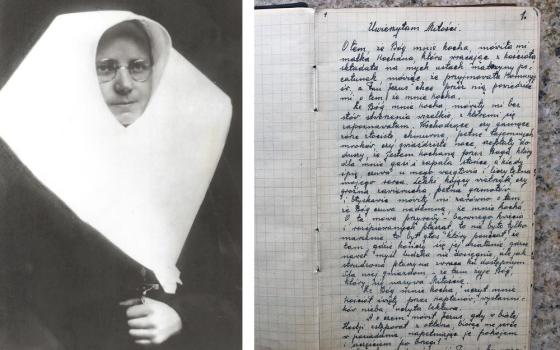Author presents a masterful primer on the WikiLeaks phenomenon
THE AGE OF WIKILEAKS: FROM COLLATERAL MURDER TO CABLEGATE (AND BEYOND)
By Greg Mitchell
Published by Sinclair Books, $11.95
Something is happening. It’s been under our noses for a year now. It’s the rumbling behind the scenes of every major world event. It’s about diplomatic cables. It’s about revolutions. It’s just one word -- WikiLeaks.
And in a masterful new book by Greg Mitchell, The Age of WikiLeaks, we have the definitive primer for what’s going on.
First there was a leaked video. Given the catchy title “Collateral Murder,” it showed a U.S. helicopter in Iraq firing on a group of civilians, killing them and two Reuters journalists in the crowd. Then there were diplomatic cables. Lots of them. On all sorts of subjects.
Some, grouped together as the “Iraq War Logs,” showed that the number of civilians killed in the U.S.-led war in Iraq has been officially documented at above 100,000. Others gave proof that the State Department asked our diplomats at the United Nations to spy on U.N. staff, including the secretary general -- even aiming to retrieve credit card numbers.
Still others painted a picture of the real relationship between the Vatican and countries that try to bring sex-abusing priests to justice. One cable -- sent from a key U.S. diplomat at the U.S. embassy to the Holy See in the midst of Ireland’s investigation into sex abuse in the Dublin archdiocese -- said the Vatican was most worried that the Irish “respect and protect” the Holy See’s sovereignty in its investigation.
And then there are the revolutions across the world. Tunisia. Egypt. Bahrain. Libya -- who knows where else next. And what helped kick off them off? You’ve got it. Those cables.
 One in particular shines in the limelight. Sent from the American embassy in Tunisia, it detailed the gross corruption of now-deposed Tunisian President Zine El Abidine Ben Ali’s family. The cable warned U.S. diplomats in June 2008: “With Tunisians facing rising inflation and high unemployment, the conspicuous displays of wealth and persistent rumors of corruption have added fuel to the fire.”
One in particular shines in the limelight. Sent from the American embassy in Tunisia, it detailed the gross corruption of now-deposed Tunisian President Zine El Abidine Ben Ali’s family. The cable warned U.S. diplomats in June 2008: “With Tunisians facing rising inflation and high unemployment, the conspicuous displays of wealth and persistent rumors of corruption have added fuel to the fire.”
Talk about foreshadowing. The cable was released to the public Dec. 7. Tunisia exploded into protest three weeks later. Egypt followed. If the First World War was a result of the “powder keg of Europe” being ignited by an assassination, who knows what to call this.
And the cause of it all? WikiLeaks.
Yes, the international organization run by Julian Assange -- the man at the center of an infamously weird sexual assault investigation. The organization that has leaked untold -- and nearly unimaginable -- numbers of diplomatic cables, sent from U.S. diplomats on assignments around the world.
We still don’t really know what it all means. What this new model of journalism -- where government informants forego dealing with writers and editors and just upload their leaked materials to a secure Web site -- portends for newspapers or governments.
Yet we have help. At every major revelation there have been untold numbers of dedicated watchers who have been scanning through the cables -- dissecting their contents in newspaper reports and columns, tweets and blogs.
But Mitchell, former editor of Editor & Publisher, deserves special attention. For the past year he’s maintained a “live blog” at the Web site of The Nation magazine.
Every single day -- weekends included -- Mitchell lists, by the hour, every development relating to the leaked cables and documents. If there’s something out there mentioning a leaked cable, chances are it’s on his “WikiLeaks News & Views Blog.” It’s an unparalleled resource.
Now it’s become even more, a piece for the historical record.
Without much fanfare, Mitchell released The Age of WikiLeaks in February. It’s a book that pieces together what seems to be all of the news and views that have spanned the globe since WikiLeaks became a household name.
It’s an exhaustive account, culling from what seems nearly everyone who’s written on the subject around the world. Written in chronological order, it starts with the April 5, 2010, release of “Collateral Murder” and continues into early February of this year. It covers everything, from the cables to the international spy thriller intrigue to the revolutions.
If you haven’t been following WikiLeaks, now is the time to start. Don’t wait. There isn’t time to waste.
There are other WikiLeaks books too -- most notably from the staffs of The New York Times (Open Secrets: WikiLeaks, War, and American Diplomacy) and The Guardian (Wikileaks: Inside Julian Assange’s War on Secrecy by David Leigh and Luke Harding). But Mitchell’s is the one you want. It’s got the most in-depth account.
Start reading. Something is happening. Right under our noses. It’s big. It’s changing all the rules. It’s reshaping the global map.



